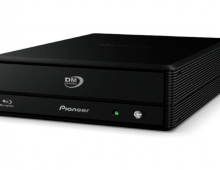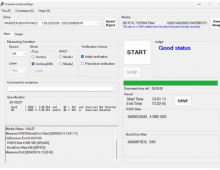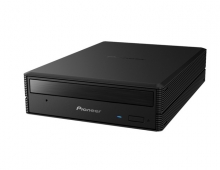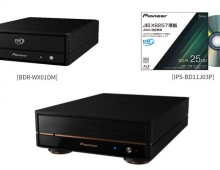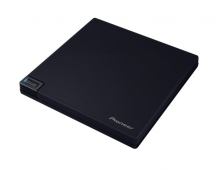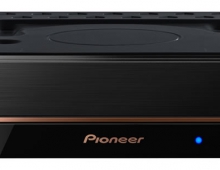
Mitsubishi Chemical and Pioneer Develop OLED Lighting Using The Wet Coating Process
Mitsubishi Chemical and Pioneer today announced that they have successfully developed organic light emitting diode (OLED) elements using wet coating process for the light-emitting layers, and have agreed to set up a testing facility with an eye to establishing mass production technology.
Most OLED panels are currently manufactured using a film forming process called "vapor deposition." They have complex structures that require multiple light-emitting layers (multi-unit structure) to increase their light-emitting performance.
The best way to inexpensively mass-produce panels with large surface areas and uniform light-emitting surfaces with as few imperfections as possible however is to manufacture panels using a process known simply as "wet coating".
In particular, there is growing demand to use the wet coating process to manufacture light-emitting layers from high-end materials, in order to significantly improve the performance of OLED lighting panels. With existing technology however, it isn't possible to achieve the necessary lifetime or luminescent efficiency for use in lighting.
Working with Mitsubishi Chemical and its research and development subsidiary Mitsubishi Chemical Group Science and Technology Research Center, Inc., in January 2010 Pioneer began a joint project to develop OLED lighting panels with a simple single-unit structure using the wet coating process.
The OLED device (both white and full-color versions) developed as a result of this project has a long enough lifetime and are efficient enough to make them commercially viable for use in lighting. This has been achieved by combining unique light-emitting materials with a wet coating process developed by Mitsubishi Chemical and by optimizing device structure and the wet coating process on a joint basis between both companies.
Assuming a lifetime of 70% with a white luminance of 1,000 cd/m2, the white elements provide a lifetime of 57,000 hours. In terms of luminescent efficiency too, the high-efficiency full-color device achieve levels of 56 lm/W at 2,000 cd/m2.
Based on these results, Mitsubishi Chemical and Pioneer have agreed to set up a testing facility with an eye to establishing mass production technology for OLED lighting panels, using the wet coating process to produce single-unit light-emitting layers.
The facility will be able to produce and evaluate the performance of prototype OLED lighting panels using the wet coating process on G1 glass substrates (40 cm x 30 cm). The aim is to develop and test mass production technology.
The testing facility will be set up at the Yonezawa Plant (Yonezawa, Yamagata prefecture) operated by Pioneer?s wholly owned subsidiary Tohoku Pioneer Corporation and is scheduled to be up and running by summer 2012.
Mitsubishi Chemical and Pioneer are aiming to establish mass production technology as soon as possible, with an eye to commencing full-scale production of OLED lighting by fiscal 2014.
The best way to inexpensively mass-produce panels with large surface areas and uniform light-emitting surfaces with as few imperfections as possible however is to manufacture panels using a process known simply as "wet coating".
In particular, there is growing demand to use the wet coating process to manufacture light-emitting layers from high-end materials, in order to significantly improve the performance of OLED lighting panels. With existing technology however, it isn't possible to achieve the necessary lifetime or luminescent efficiency for use in lighting.
Working with Mitsubishi Chemical and its research and development subsidiary Mitsubishi Chemical Group Science and Technology Research Center, Inc., in January 2010 Pioneer began a joint project to develop OLED lighting panels with a simple single-unit structure using the wet coating process.
The OLED device (both white and full-color versions) developed as a result of this project has a long enough lifetime and are efficient enough to make them commercially viable for use in lighting. This has been achieved by combining unique light-emitting materials with a wet coating process developed by Mitsubishi Chemical and by optimizing device structure and the wet coating process on a joint basis between both companies.
Assuming a lifetime of 70% with a white luminance of 1,000 cd/m2, the white elements provide a lifetime of 57,000 hours. In terms of luminescent efficiency too, the high-efficiency full-color device achieve levels of 56 lm/W at 2,000 cd/m2.
Based on these results, Mitsubishi Chemical and Pioneer have agreed to set up a testing facility with an eye to establishing mass production technology for OLED lighting panels, using the wet coating process to produce single-unit light-emitting layers.
The facility will be able to produce and evaluate the performance of prototype OLED lighting panels using the wet coating process on G1 glass substrates (40 cm x 30 cm). The aim is to develop and test mass production technology.
The testing facility will be set up at the Yonezawa Plant (Yonezawa, Yamagata prefecture) operated by Pioneer?s wholly owned subsidiary Tohoku Pioneer Corporation and is scheduled to be up and running by summer 2012.
Mitsubishi Chemical and Pioneer are aiming to establish mass production technology as soon as possible, with an eye to commencing full-scale production of OLED lighting by fiscal 2014.

